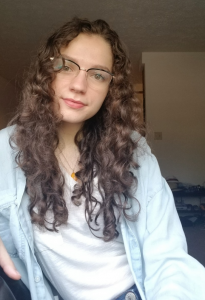By Monika Arbačiauskaitė
“In a world where time cannot be measured, there are no clocks, no calendars, no definite appointments. Events are triggered by other events, not by time.”- Alan Lightman, Einstein’s Dreams

In Einstein’s Dreams, Alan Lightman offers a fictional retelling of Albert Einstein’s grappling with the theory of time. Through visiting Einstein’s dreams, Lightman creates a variety of worlds, each with their own special relationship and meaning of time. Lightman, a physicist and writer, understands that the science world is intertwined with human experience and approaches his writing about science as such.
Reading the novel reminds me that Einstein connected his human experience with the science, but I’m rarely reminded of the human experience in the engineering classroom. Driven by their interests and identities, professors have amassed years of knowledge and experience and continue to carry their passion into the field they now teach. But the classroom experience often feels like a chore in which students learn facts that feel black and white, disconnected from the person who is teaching, or the scholars who helped birth them.
In Einstein’s Dreams fashion, I ask you to envision a world. In this world, time is segmented. People find themselves in one area of the world together with others at the same time, for a particular length of time, where they learn from each other. People see time as a chance to share knowledge, speak of their experience, learn from mistakes made by themselves or others. Time is the chance to share the human condition.
In many ways, classrooms are the chance to share the human condition. They are spaces created for the transfer of knowledge between people. We share knowledge that has been cultivated through hundreds, if not thousands of years, by many different people in the hopes that we continue contributing to humanity’s collective knowledge.
In “Big Fish: The Lost Science of Storytelling in the Engineering Classroom”, David Chesney makes the case for telling stories to students. He highlights four ways in which stories can be used:
- To illustrate an important point
- To give context to the content being presented
- To act as transition points to topics that may seem divergent
- To break up a long lecture
He provides examples of how he does this in his own classes and gives advice on how to practice the skill of storytelling. Professors are not professional novelists, but they also aren’t walking encyclopedias. Introducing storytelling in the classroom is a way to connect with students and can be a useful tool in aiding student understanding.
When I started graduate school, I found myself needing to learn a subject entirely different than what I had studied in undergraduate. Although I was a chemical engineering graduate student, I was working in a lab that primarily focused on genetic engineering. Suddenly, I was enrolled in courses within the molecular cell biology department trying to build a working knowledge of biology and genetics, taking classes that felt like they were in a different language. I struggled in every class except one. In this class, the professor took great care in introducing material with context. He told us stories of scientists and their lives, why they made the discoveries they made, and how their personal lives affected their research. It added such depth to the content, making it meaningful and interesting, and as a result, more likely to be retained. That class reminded me that science is very much so a human endeavor. There are failures, accidental discoveries, and emotional highs and lows; there is color to the work.
Storytelling is a way to bring back color to the work.
References and Additional Readings:
Chesney, D. Big Fish: The Lost Art of Story-Telling in the Engineering Classroom, at the American Society of Engineering Educators Conference, Chicago, Illinois, June 2006.
Chesney, D. Big Fish: The Lost Art of Story-Telling in the Engineering Classroom, at the American Society of Engineering Educators Conference, Honolulu, Hawaii, June 2007.
Lightman, A. Einstein’s Dreams. Pantheon Books, New York, NY, 1993. ISBN 0-67941-646-3
Karobi, M. Storytelling as an Active Learning Tool to Engage Students in a Genetics Classroom. Journal of Microbiology & Biology Education, 15(12) 332-334. 2014.